Baghdad << BAG dad >> is Iraq’s capital and one of the Middle East’s largest cities. The city has about 7 million people. It is Iraq’s chief center of culture, manufacturing, trade, and transportation. The city lies on both banks of the Tigris River, about 335 miles (539 kilometers) northwest of the Persian Gulf.
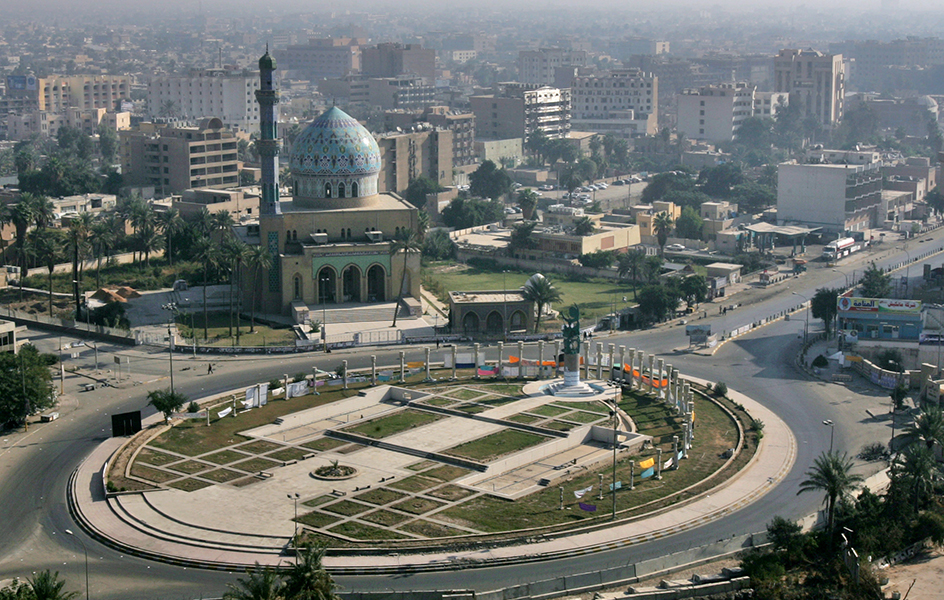
Baghdad became an important city during the A.D. 700’s. Through the centuries, it has survived repeated damage by wars, fires, and floods.
The city
covers about 254 square miles (657 square kilometers) on a fertile plain that is Iraq’s agricultural heartland. Central Baghdad has two main districts—Karkh, on the west bank of the Tigris, and Rusafah, on the east bank. Parts of Karkh and Rusafah have narrow, dusty streets and colorful bazaars. Central Baghdad also has modern banks, department stores, and hotels. Industrial and residential districts extend in all directions from central Baghdad. The metropolitan area includes Kadhamain, an Islamic holy city. 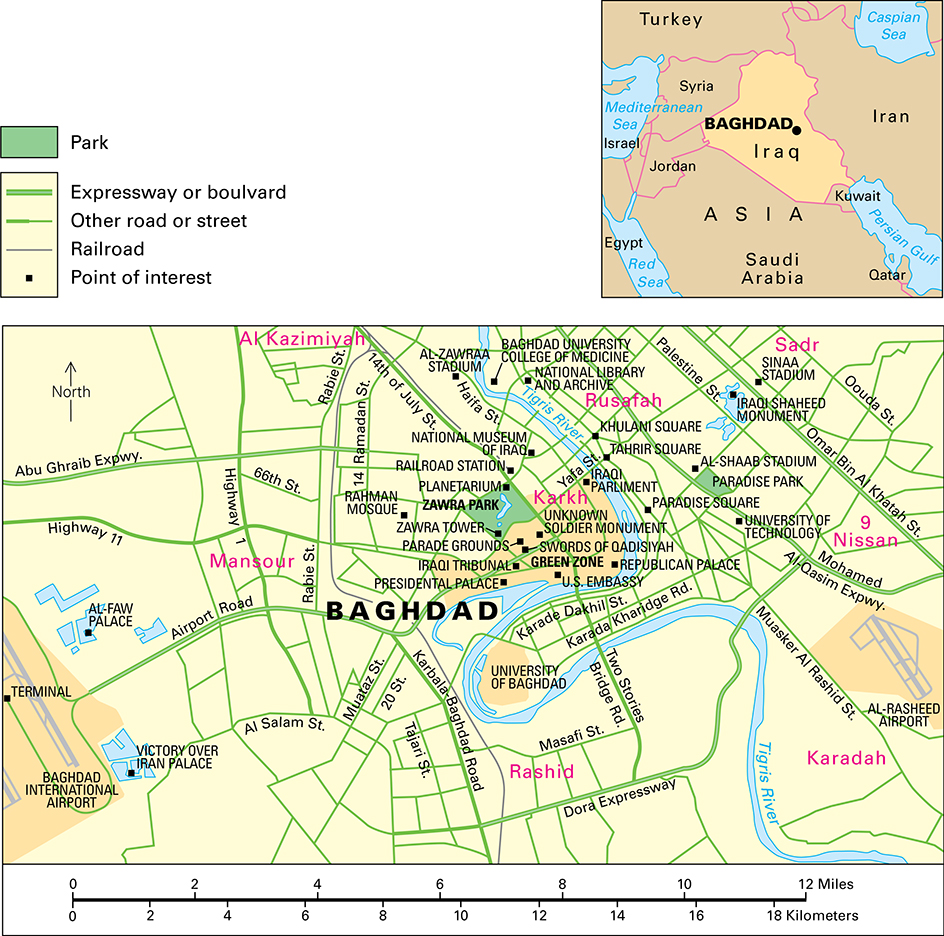
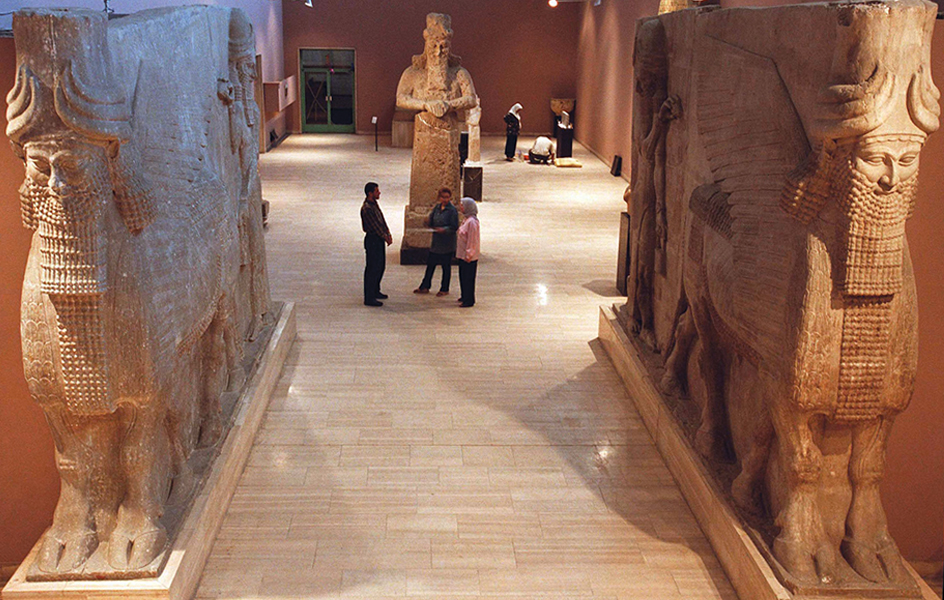
Baghdad is home to the University of Baghdad, Al-Mustansiriya University, and the University of Technology. The National Museum of Iraq in Baghdad, which housed an important collection of Middle Eastern antiquities, was looted at the start of the Iraq War in 2003 and closed. It reopened with a smaller collection in 2009.
People.
Most of the people of Baghdad are Muslim Arabs. Jews, Christian Arabs, and Muslim Iranians and Kurds make up minority groups in the city. Arabic is the chief language, but most of the Iranians and Kurds also speak their own language.
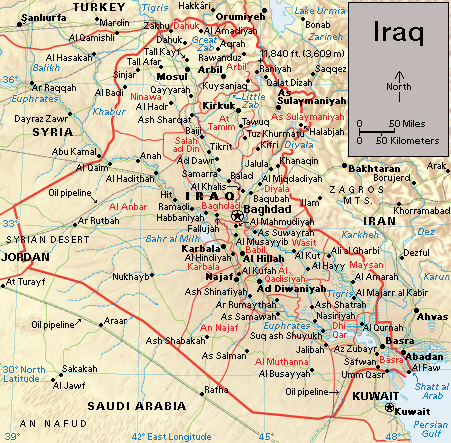
Many people in Baghdad share a house with at least three generations of their family. Most wealthy and middle-income families have brick homes surrounded by gardens and high walls. Thousands of the poorest people live in public housing on the outskirts of the city.
Economy.
Petroleum refining is the city’s chief industrial activity. Other products of Baghdad include cement, cigarettes, and textiles. Construction and trade provide many jobs in the city.
Baghdad is the center of Iraq’s highway and railroad systems, which link the city with nearby countries and the Persian Gulf. An international airport serves the city.
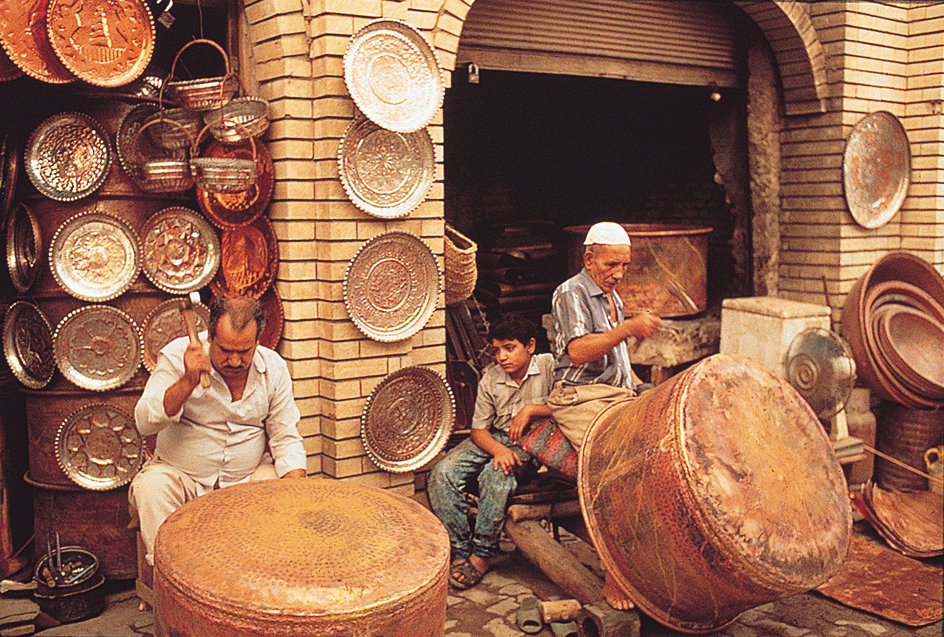
History.
People have lived in what is now the Baghdad area since about 4000 B.C. This area formed part of ancient Babylonia. From the 500’s B.C. to the A.D. 600’s, Persians, Greeks, and then Romans controlled the area.
An Islamic dynasty, the Abbasids, gained control of the region in 750. In 762, Abu Jafar al-Mansur, an Abbasid caliph (ruler), began building Baghdad as the site for the new capital of the Arab Muslim empire. At that time, the empire extended from western North Africa to western China. By 800, Baghdad had nearly a million people and was a world center of education and Islamic culture.
From the 1000’s to the 1200’s, Baghdad gradually lost power and wealth. In 1258, Mongols from Central Asia ended the empire and destroyed Baghdad. Mongols, Persians, or Turks controlled Baghdad until about 1535, when it became part of the Ottoman Empire. Wars, fires, and floods repeatedly damaged Baghdad. By the late 1700’s, only about 15,000 people lived there. In the 1800’s, the Ottoman government restored the city, and by 1900, the population of Baghdad was nearly 100,000.
During World War I (1914-1918), British troops captured what is now Iraq from the Ottoman Empire. The British helped establish a petroleum industry in the area. In 1932, Iraq became an independent nation with Baghdad as its capital.
The Iraqi government used much of its income from petroleum for flood control and to establish industries and schools in Baghdad. Job opportunities in the city attracted thousands of rural Iraqis, and Baghdad developed a housing shortage. During the 1960’s and 1970’s, the government helped finance thousands of homes for middle-income and poor families.
During the Persian Gulf War of 1991, Baghdad suffered heavy bombing by allied forces. The bombing destroyed much of the city’s power and water supply and crippled its transportation and communication systems. After the war, telephone, electric power, and water systems were restored. See Persian Gulf War of 1991.
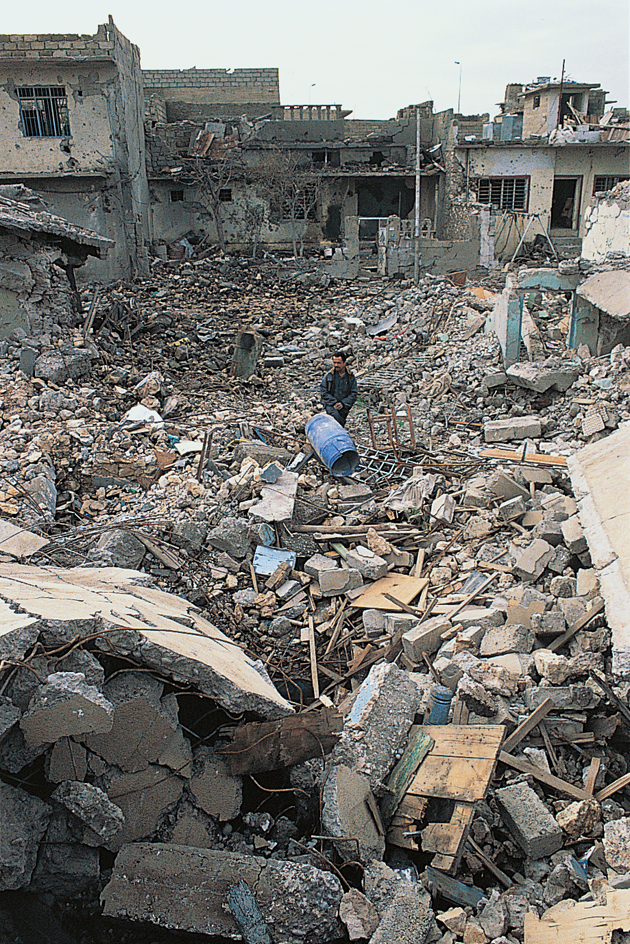
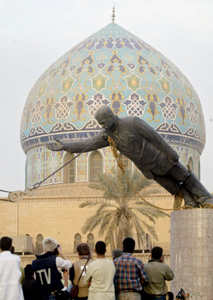
Baghdad was heavily damaged during the Iraq War (2003-2011). United States-led air forces bombed military targets in the city, and militants and suicide bombers carried out numerous attacks on coalition and civilian targets. Since the end of the war, sectarian violence has killed thousands of people in Baghdad. See Iraq War.
